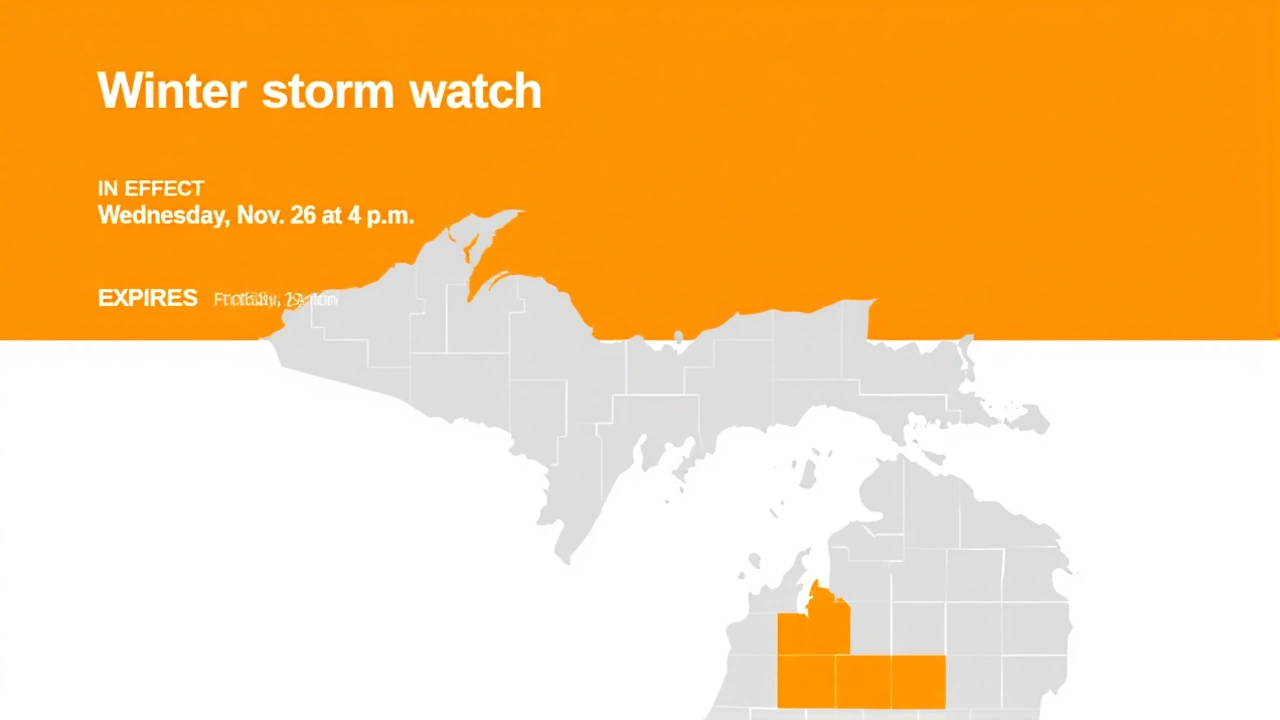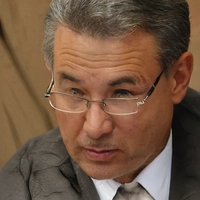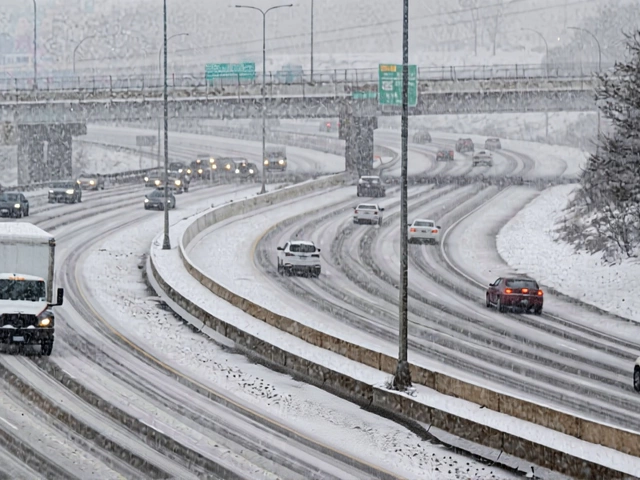When the first major winter storm of the season rolled into Northeast Ohio just before Thanksgiving, it didn’t just bring snow—it disrupted plans, stranded drivers, and turned holiday journeys into hazardous treks. A Lake Effect Snow Warning Cuyahoga County was issued by the National Weather Service at 10 a.m. on Thanksgiving Day, November 27, 2025, and remained active until 4 a.m. the next morning. The warning targeted shoreline communities from Lake County to Ashtabula County, where snow bands were expected to intensify as winds shifted westward, dumping up to a foot of snow in some areas by Friday night. Meanwhile, the greater Cleveland metro area braced for 2 to 4 inches, enough to make roads slick and visibility near zero during peak travel hours.
From Rain to Ice: The Rapid Shift in Ohio’s Weather
It wasn’t always this cold. Just 48 hours earlier, WBNS 10TV meteorologists in Columbus reported steady rain across the state, with over 0.25 inches falling on November 25–26. By Wednesday evening, November 26, temperatures had plummeted into the 30s as a sharp cold front swept in, bringing gusts over 30 mph. Wind chills dropped into the 20s. By Thursday morning, it was already below freezing in Toledo, and by noon, snowflakes were mixing with sleet in Dayton. The transition from wet to white happened faster than most residents expected—so fast that some families had already left for Thanksgiving dinners when the first snowflakes began sticking to windshields.
What the Forecasters Saw Coming
It wasn’t a surprise to everyone. Paul Pastelok, lead long-range meteorologist at AccuWeather, had warned back in November that the 2025–2026 winter would be a "bookend" one—meaning the most intense storms would cluster at the beginning and end of the season. "The Midwest and Great Lakes are going to get hammered," he said. "Cold air from Canada is meeting unusually warm lake waters, and that’s a recipe for heavy, persistent lake-effect snow." His team had already projected Buffalo, New York could see 90–100 inches this winter, nearly matching its historic average. Northeast Ohio, caught in the same atmospheric crosshairs, was next in line.
WKYC Channel 3 meteorologists in Cleveland confirmed sustained winds of 15–25 mph with higher gusts, fueling blowing snow and whiteout conditions along the lakeshore. "We’ve seen this pattern before," said chief meteorologist Lisa Chen during a live update on November 26. "But this one’s hitting right when people are on the move. That’s the dangerous part." The forecast wasn’t just about snowfall totals—it was about timing. The heaviest bands were expected between 1 p.m. and 7 p.m. on Thanksgiving, precisely when families were driving to relatives’ homes or heading to restaurants.
Travel Chaos and the Ohio State-Michigan Game
For fans heading to the Ohio State versus Michigan football game in Ann Arbor, Michigan on Saturday, November 29, the threat wasn’t over. WBNS 10TV warned of another system developing over the weekend, possibly bringing rain, freezing rain, or even more snow. With temperatures expected to hover near freezing, roads could turn into ice rinks. The Ohio Department of Transportation had already pre-treated major highways, but with over 200,000 people expected to travel between Columbus and Ann Arbor, even a half-inch of ice could cause pileups.
The Dispatch, Columbus’s leading news outlet, ran a headline on November 20 that now felt prophetic: "Is snow in the Thanksgiving weather forecast in Ohio? Bad weather brewing." They weren’t wrong. By Thursday, over 1,200 flights had been delayed or canceled at Cleveland Hopkins International Airport, and Amtrak reported reduced service between Toledo and Cleveland due to track conditions.

Why This Storm Matters Beyond the Holiday
This wasn’t just a Thanksgiving headache. It was a preview of what’s coming. The National Weather Service noted that December 2025 could be the snowiest in decades for the Great Lakes region. If this early-season storm is any indication, rural roads in Geauga County and Ashtabula County—already prone to isolation during winter—could face multi-day power outages and stranded residents. Emergency crews in Cuyahoga County reported a 40% spike in weather-related 911 calls compared to last year’s Thanksgiving.
And here’s the twist: while the snow may clear by Saturday, the cold won’t. Temperatures on Black Friday, November 28, barely climbed above 23°F in Cleveland, with wind chills dipping into the single digits. That’s not just uncomfortable—it’s dangerous for the elderly, homeless populations, and anyone working outdoors. Local shelters in Columbus and Cleveland reported record demand for warming centers.
What’s Next?
By Monday, December 1, the National Weather Service expects another cold front to sweep in from Canada, potentially bringing more snow to the Great Lakes. AccuWeather’s long-range model shows three distinct storm systems likely between December 5 and December 15. For now, residents are being told to keep shovels, blankets, and emergency kits ready—not just for the holidays, but for what’s coming next.
Frequently Asked Questions
How much snow is expected in Cleveland compared to other parts of Ohio?
The Cleveland metro area is forecast to receive 2 to 4 inches of snow, while Geauga County and Ashtabula County could see up to 12 inches by Friday night. Areas farther south, like Columbus and Dayton, received rain and sleet, with only trace snowfall. The difference comes from proximity to Lake Erie—lake-effect snow is strongest within 10–20 miles of the shoreline.
Why is this storm called a "lake effect" snow event?
Lake effect snow happens when cold, dry air moves over the relatively warm waters of Lake Erie, picking up moisture and heat. As the air rises and cools again over land, it dumps snow in narrow, intense bands. This isn’t a blanket snowstorm—it’s localized, sometimes dropping 3 inches in one neighborhood and barely a dusting a mile away. That’s why Cuyahoga County got hammered while Franklin County stayed mostly wet.
What’s the impact on holiday travel and flights?
Over 1,200 flights were delayed or canceled at Cleveland Hopkins International Airport on Thanksgiving Day alone. Ground transportation was equally affected: Ohio Turnpike officials reported 47 accidents between 10 a.m. and 6 p.m., mostly due to snow-covered lanes. Amtrak canceled two trains between Toledo and Cleveland, and Greyhound suspended service in Ashtabula County for 24 hours. Many families opted to delay travel until Saturday.
Are schools and businesses closing because of the storm?
Most schools in Cuyahoga, Lake, and Geauga counties closed on Friday, November 28, citing unsafe road conditions. Some businesses in Cleveland extended holiday closures through Monday. But in central Ohio, where snowfall was minimal, most offices opened normally. The difference highlights how localized this storm was—what’s a blizzard in one county is just a cold day in another.
Is this storm part of a larger winter trend?
Yes. According to Paul Pastelok of AccuWeather, this is the opening act of a "bookend winter"—with the most severe storms hitting early and late in the season. The Great Lakes region is especially vulnerable due to warming lake temperatures fueling more moisture in colder air. December could bring even heavier snow, particularly around Buffalo and the Ohio shoreline. This isn’t an anomaly—it’s becoming the new normal.
What should residents do to prepare for the rest of the winter?
Keep an emergency kit with blankets, non-perishable food, water, flashlights, and a battery-powered radio. Charge phones and power banks. If you live in a rural area like Ashtabula County, make sure your vehicle has winter tires and a full tank. Check on elderly neighbors. And don’t assume the storm’s over after Thanksgiving—AccuWeather’s model shows at least three more significant systems coming before Christmas.











